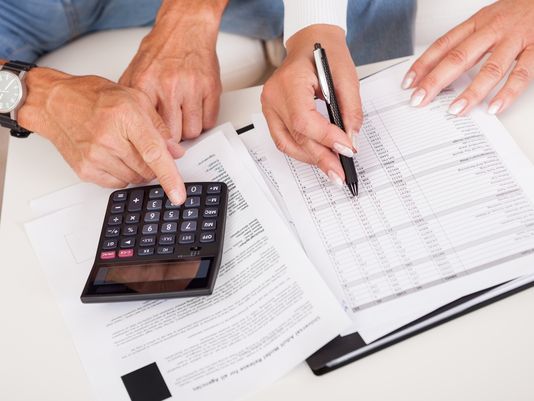Cut taxes in retirement with these moves

Kelley Holland, CNBC 12:58 p.m. EDT May 28, 2016

Taxes are an important part of retirement planning.(Photo: Thinkstock)
Big tax bills in retirement can put a damper on your golden years, even for those who were steady savers.
Unfortunately, most people fail to plan for taxes, according to Ray Benton, a certified financial planner and investment advisor at Lincoln Financial Advisors.
"They don't have a clue," he said.
High tax costs in retirement can sharply increase your risk of running out of money, according to Putnam Investments[1]. Using a portfolio invested 60 percent in stocks, 30 percent in bonds and 10 percent in cash, and assuming that investment performance matched long-term historical levels, the firm calculated that an investor withdrawing 5 percent of savings every year and paying no taxes had a 77 percent chance of making the money last for 30 years.
But if that same person had a 15 percent tax rate, the odds of the money lasting drop to 58 percent. At a 25 percent tax rate, the odds fell to 44 percent, and the investor would be more likely than not to run out of money.
Luckily, there are ways to legally reduce what you owe the IRS[2].
Know your bracket
The first step is to make sure you know your current income tax bracket and the risk of crossing into a higher one. For example, if your income tips you into a higher bracket, your marginal tax rate will go up and you may also sharply increase the share of your Social Security check[3] that is subject to taxes, Benton said.
If your adjusted gross income, including municipal bond income, and half of your Social Security benefit is between $25,000 and $34,000, 50 percent of your benefit may be taxable. Above $34,000, 85 percent of your benefit may be taxable. For retirees whose income barely exceeds that level, the tax bill can be punishing, he said.
As a result, it may make sense to prepay some deductible expenses before the end of the year, or defer any taxable payments coming your way.
Strategic withdrawals
Of course, you may not be able to completely control which tax bracket you land in. Starting at age 70 ½, you are required by law to draw a minimum amount from any tax-deferred savings, and if you have a large amount socked away in 401(k) plans or traditional IRA accounts, that can inadvertently push you into a higher bracket.
Even with that requirement, though, there are ways to manage income. One approach is to be strategic about the years between when you retire and when you have to start taking those distributions, said Phil DeMuth, author of "The Overtaxed Investor."
Say you retire at 62, eight years before the minimum distribution requirement kicks in. (That's also the median retirement age[4] of current retirees, according to JPMorgan Asset Management.) Your income in those years is likely to be pretty low, which will keep your tax bracket lower as well.
DeMuth suggests drawing money from tax-deferred accounts during those years to bring you to the income you want. The withdrawals will be subject to ordinary income taxes, but at the lower rate.
"Start by taking out only enough from your retirement account to the point where you would start paying taxes," he said. Then DeMuth recommended tapping taxable savings, because the tax rate on that money is likely to be lower.
That approach will keep your taxes lower until you have to take required minimum distributions. And when that time does come, the withdrawals will be reduced by the shrinkage of the tax-deferred accounts.
Taxable versus tax-deferred accounts
Another way to keep your tax bill in check is to consider which investments you allocate to each type of account. For example, in a taxable account, you will pay ordinary income taxes on short-term gains and some dividends, but lower long-term capital gains rates when those investments increase in value over time. Since capital gains rates are typically lower than income tax rates, some experts recommend keeping the bulk of your stock investments in taxable accounts.
By the same token, a tax-deferred account can be a good home for fixed income investments that throw off plenty of short-term dividend or interest income but generally do not appreciate as much as stocks.
Think Roth
Roth IRA accounts can be another useful tool to keep taxes in check. Above certain income levels, contributions to Roth accounts are not tax deductible, and you may have to pay taxes if you convert traditional IRA assets to a Roth.
But if you believe your tax rate now is lower than it will be in the future, such a move can make sense.
Roth IRAs also are not subject to the required minimum distribution rule, so for those with enough money to think about passing on savings, these accounts can be good ways to do that. And if you do need to use the money in the account, you can draw it down tax-free.
Muni bonds
Municipal bonds are another way to limit your tax exposure, and many retirees use them this way since they are exempt from federal taxes and often state taxes as well. At the moment, though, muni bond yields are low after more than six months of bond fund inflows[5] worth more than $22 billion. None of these moves can guarantee that you won't pay more taxes than you think you should. But then again, as Benjamin Franklin said, nothing in life is certain — except death and taxes.
© CNBC [6]is a USA TODAY content partner offering financial news and commentary. Its content is produced independently of USA TODAY.
Read or Share this story: http://usat.ly/1TMb4fC
References
- ^ Putnam Investments (www.putnam.com)
- ^ IRS (www.cnbc.com)
- ^ Social Security check (www.ssa.gov)
- ^ median retirement age (am.jpmorgan.com)
- ^ bond fund inflows (www.reuters.com)
- ^ CNBC (www.cnbc.com)









